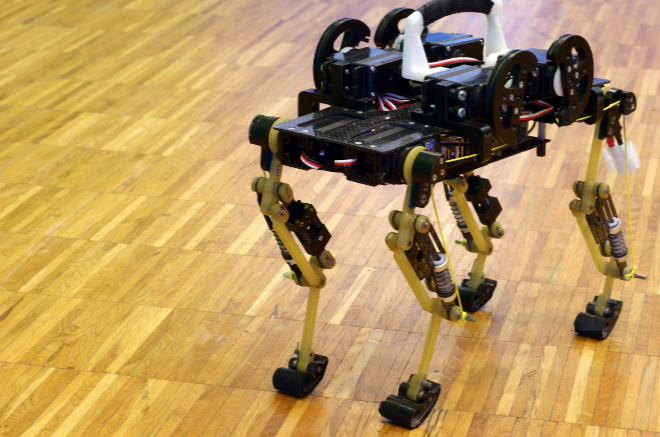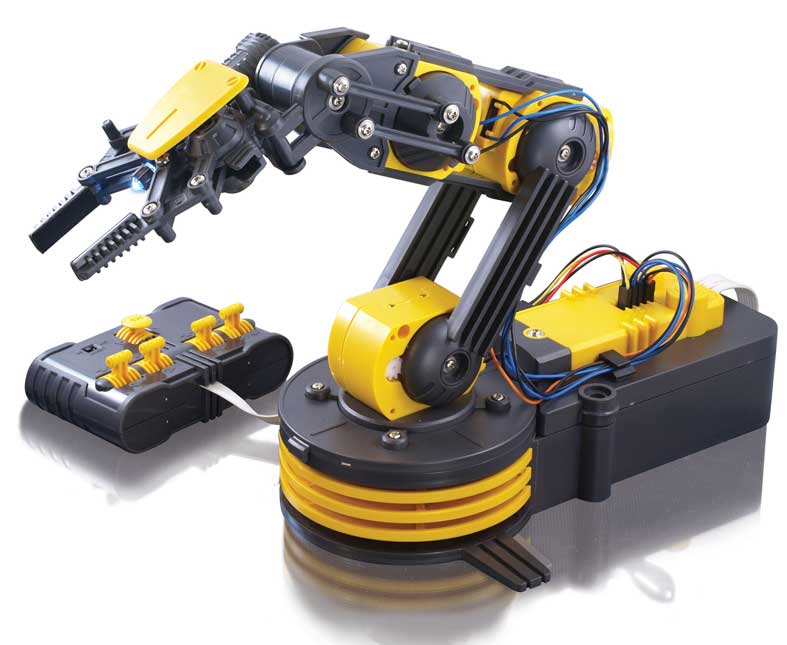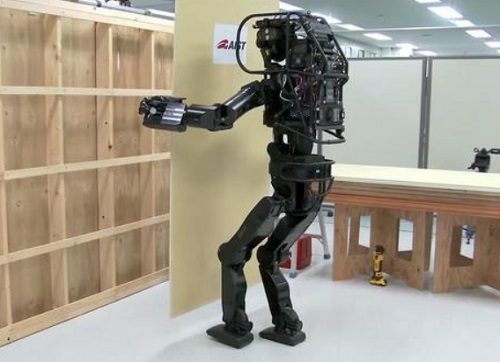Robots used in first joint U.S.-British training exercise
05/02/2018 / By Edsel Cook

Military robots pulled off the very first robotic breaching operation during a joint training exercise in Germany. While their American and British minders supported them from a safe distance, the robots successfully removed various dangerous obstacles from the simulated battlefield, according to an article on ZDNet.
During the Robotic Complex Breach Concept exercise, manned tanks and fighting vehicles provided covering fire for British-built Terrier engineering robots. The remote-controlled robots neutralized minefields and set up a heavy-duty bridge over a deep trench while their operators stayed inside American vehicles several hundred feet back.
Other ground-based robots that saw action during the drill included a self-driving armored personnel carrier that deployed smoke to hide the Terries from sight. Several models of drones also flew over the pretend battlefield in search of possible chemical weapons.
“This is a historic moment. This is a great step forward for the Army, and for robotics,” remarked 1st Lt. Cody Rothschild, an officer with the 1st Infantry Division’s 2nd Armored Brigade Combat Team (2ABCT), with regards to the successful exercise. (Related: Coming soon: An army of hunter-killer robots that will murder humanity.)
Engineering robots can breach enemy defenses without risking human lives
The dangerous duty of clearing a breach in enemy defenses is usually assigned to members of the engineering corps. So the engineers who participated in the robotic breaching exercise were able to breathe much easier.
Any breach in a defensive line will get targeted by enemy weapons, explained Warrant Officer Robert Kemp of the British Army. Using robots for breaching operations would eliminate any risk to human life.
1st. Lt. Felix Derosin, a platoon leader in the 2ABCT, said that engineers like him expect a 50 percent casualty rate during breaching operations. So the effectiveness of the engineering robots meant a lot to him.
“Being able to take our guys away from that, and have some robots go in there, is a very positive thing for us. In the future, this can save engineers’ lives,” Lt. Derosin told an interviewer from the military organ Stars and Stripes.
“It keeps us safe from being out there like sitting ducks,” agreed Pvt. Jonathon Ramirez, another engineer in the 2ABCT.
The U.S. military has been using drones and other unmanned vehicles for many years. But most of the troops in the exercise had never seen robots used in combat operations like breaching defenses.
The Army is currently testing self-driving vehicles armed with automated weapons, while the Marines have been trying out robots that could help them seize and hold enemy beaches.
Experts believe combat robots would increase likelihood of armed conflict
Experts believe that replacing human soldiers with robots on the battlefield will have benefits and drawbacks. On one hand, using robots for dangerous missions instead of humans would reduce casualty rates.
On the other hand, soldiers might be less reluctant to pull the trigger on enemy robots than they would be if it was another human being in their sights. This reduced restraint would understandably increase the likelihood of an actual firefight or even a war.
The military is currently considering the obvious advantages and potential consequences of unleashing robots on the battlefield. But it may be too little too late because the door had been thrown wide open when a CIA-controlled Predator drone launched the first of many such attacks in 2001.
U.S. military forces launched more than 2,000 unmanned drone strikes in Afghanistan, Pakistan, Somalia, and Yemen in 2017 alone. Almost all of these attacks were performed by U.S.-based drone pilots rather than American forces in those countries or their neighboring countries.
For more articles about military robots, visit NationalSecurity.news.
Sources include:
Tagged Under: battlefield robots, combat robots, drones, engineer, engineering robots, military drones, military robots, military technology, remote-controlled robots, robotic breaching operation, Robotic Complex Breach Concept exercise, robots, tanks, U.S. Army



















